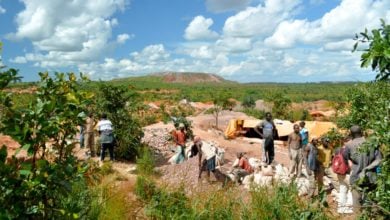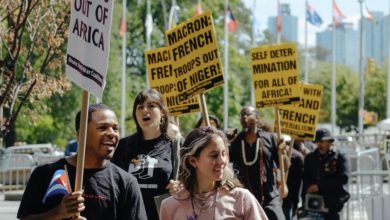The minister of South Africa’s Department of Agriculture and Land Affairs recently announced methods to speed up the process of land redistribution to Black farmers. The announcement by the new minister, Lulama Xingwana, signaled that the government would no longer negotiate selling prices with white land owners for longer than six months. After six months, if a price is not agreed to, the government will expropriate the land. It’s a positive move in the fight to redress apartheid’s brutal, racist effects.
The announcement was originally made at an event in South Africa’s Limpopo region on Aug. 11, but has since been
 |
The statement called “the whole restitution process to be opened up once more, taking into account many communities that never had the opportunity to bring their claims forward, including the millions of victims of forced removals.”
The process to redistribute land in South Africa has been ongoing since the defeat of apartheid in 1994 and the establishment of the new government, headed by the Tripartite Alliance. But little had happened in the intervening years. In 1995, immediately following the end of apartheid, whites controlled nearly all of the country’s farmland.
The Tripartite Alliance is led by the African National Congress, which has members from all classes, including members and aspiring members of the bourgeoisie. Since the days of the anti-apartheid struggle, the ANC has had a close alliance with the SACP and the Congress of South African Trade Unions. SACP and COSATU play key roles within the ANC government.
Land reform moves forward
Land redistribution is an important issue in South Africa. Under apartheid, Black farmers had no political power and were evicted from land on a massive scale. After apartheid was defeated, the ANC government promised to give land back to Black owners whose land was stolen by whites, and to expropriate land from wealthy whites for redistribution to the majority Black population.
Through the Restitution of Land Rights Act passed in 1994, the government pledged to transfer 30 percent of white-owned cultivable land to Blacks in 15 years. Because of setbacks based on white farmer intransigence, big capitalist interference and fighting within the government, the deadline was pushed back five years.
Some progress has been made. Black ownership of land in South Africa has increased from 13 percent to 16 percent
|
In recent years, the movement for land redistribution has frequently held large-scale demonstrations demanding government action.
Under the government’s “willing-buyer, willing-seller” land redistribution policy, “willing” land owners were supposed to sell their land to buyers at a price agreed upon by the land department. This left land redistribution primarily up to market forces, a policy promoted by the World Bank and International Monetary Fund and embraced by the ANC. But this policy did not work.
Land speculation caused many “willing” sellers to delay negotiations in the hopes of getting a better price than the appraisal value. Some also wanted to stall for so long that the old price would no longer be considered valid. Because of these tactics, many negotiations lasted as long as five years.
South African president Thabo Mbeki has regularly criticized white farmers for slowing down the land reform process. He declared in February 2006 that the government would review the old policy and possibly begin a new one—expropriation of any farmer’s land who failed to agree on a land-sale deal within six months of beginning negotiations. The government signaled its intention implement the new policy with Xingwana’s recent announcement.
Tozi Gwanya, South Africa’s chief lands claims commissioner, said the new approach was already paying off: “It is working; they are coming round to the table and there has been a very good response,” he told AFP on Aug. 18.
The South African government’s goal is to redistribute 30 percent of the land to Black farmers by 2014. And the government has pledged to settle almost 6,970 outstanding land claims by December 2008.
Organizations representing white landowners such as AgriSA and Freedom Front Plus have opposed the government’s intentions, saying they will oppose the policy in the courts. But the government is confident that its actions are legal.
Spokesperson for the minister of the Department of Agriculture and Land Affairs, Eddie Mohoebi, said the country’s land reform program was a constitutional obligation governed by the Restitution of Land Rights Act. He noted that the law stipulated what and how the minister could implement the restitution process including expropriation. (BuaNews, Aug. 18)
The Restitution of Land Rights Act explicitly gives the government the power to expropriate land for the purposes of land reform.
While the South African government’s new land reform measures are steps forward, the overall workers’ struggle to destroy apartheid’s legacy has been the true engine behind land redistribution. Without vigorous, mass-based struggle, the government would not have contemplated the implementation of the current phase of land redistribution.
People’s organizations aware of this reality are seeking to continue the struggle and make greater gains. South Africa’s Landless People’s Movement has called for the property rights clause in the constitution to be removed. In its place, it is advocating for a social obligations clause that would allow for the expropriation of land that is not being used productively.






